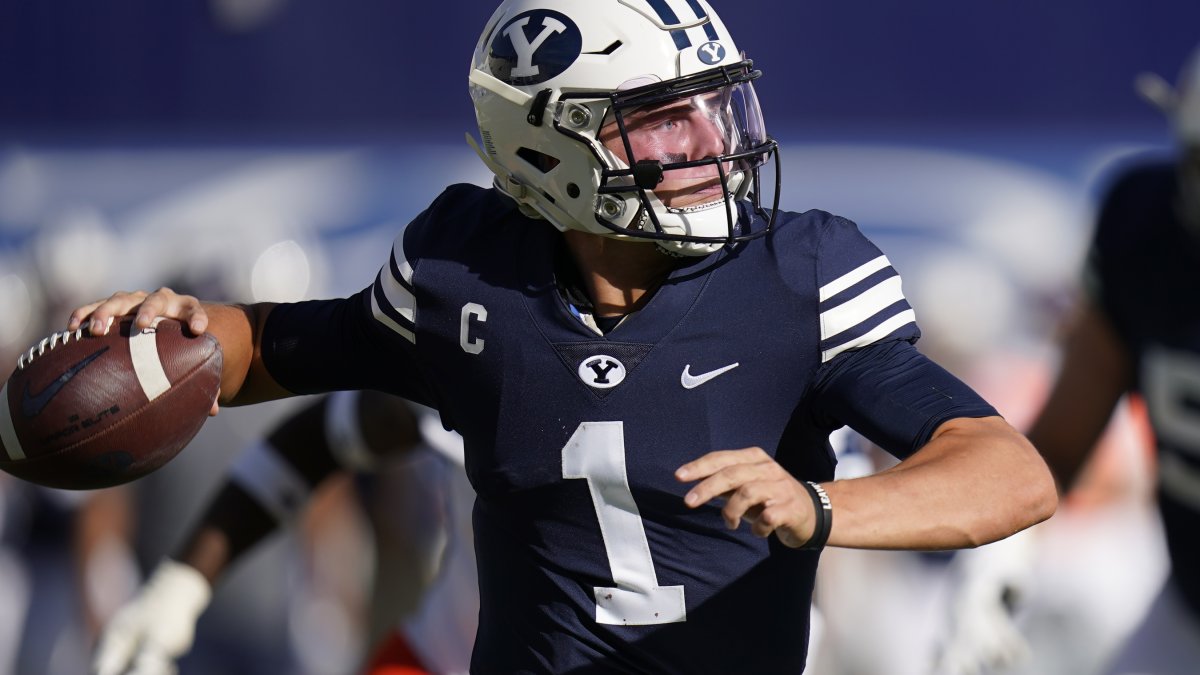The Zach Wilson problem is simple: How did a quarterback come out of absolutely nowhere and become a surefire top 15 draft pick? Was he always this good and we completely missed him? Did he genuinely improve after two years as a starter?
The answer could certainly be either of those, and it probably is a mix of both ideas. But I’m going to work under a third assumption: His team's radical new offensive scheme lifted him to these levels.
In 2018 and 2019, BYU ran your run-of-the-mill college offense: inside zone, zone reads, RPOs. They were 83rd in the country in EPA per play in 2018 and 58th in 2019. In 2020, the inside zone usage dropped in half, going from 35% of their rushing attack in 2019 to 17%. Same thing with RPOs — 16% of their plays featured an RPO in 2019 and only 8% in 2020. What replaced it? The wide or outside zone.
In 2018 — Wilson’s first year as a starter — BYU ran outside zone on only 12% of their running plays. That was tied for the 67th-highest rate in the FBS that year. A year later, they upped that number to 28% — 17th highest in the country but still not the focal point of their offense. The 2020 season was different: They ran outside zone 51% of the time on run plays. After being an inside-zone-dominant team the prior two years, they swallowed the pill and went completely into the outside (or wide) zone offense.
Why does a running play mean anything in the context of quarterback prospect? Because of how much the action off that run play creates openings in the passing game off play-action. As the wide-zone offense becomes more prevalent in the NFL, we are seeing average quarterbacks buoyed by basing the run on wide zone.
Exclusive content for premium subscribers

WANT TO KEEP READING?
Dominate Fantasy Football & Betting with AI-Powered Data & Tools Trusted By All 32 Teams
Already have a subscription? Log in



 © 2025 PFF - all rights reserved.
© 2025 PFF - all rights reserved.